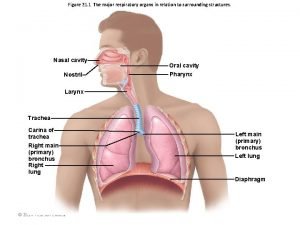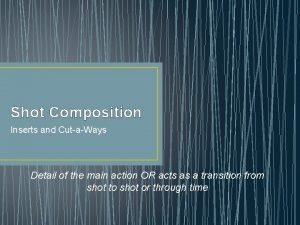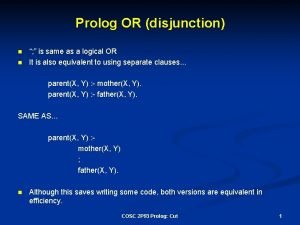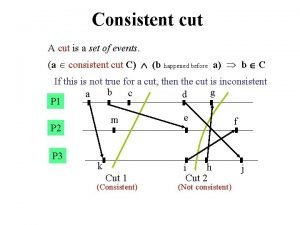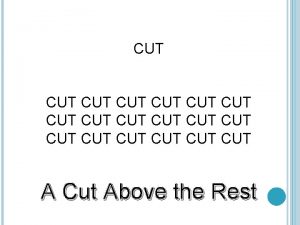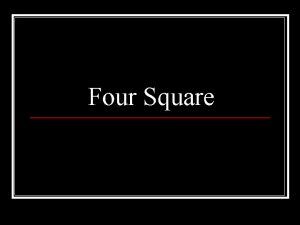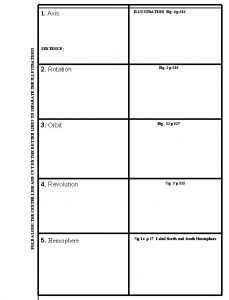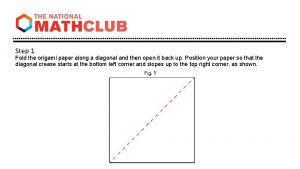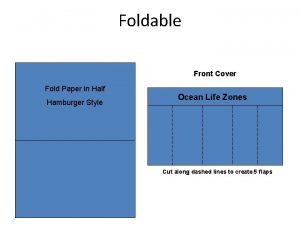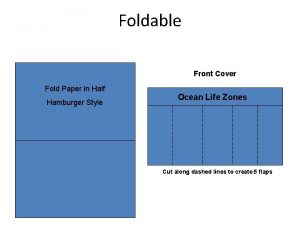Fold your paper in half Cut along your





















- Slides: 21

Fold your paper in half.

Cut along your fold so you have 2 pieces of equal size.

Lay one piece of paper on top of the other with about an inch of the bottom sticking out.

Fold over the top so you have 4 flaps. Then staple twice at the top.

Label your flaps. Different Forms of Linear Functions Slope-Intercept Form: y = mx + b Point-Slope Form: y - y 1 = m(x - x 1) Standard Form: Ax + By = C

Credit: http: //mathequalslove. blogspot. com/2014/07/algebra-1 -inb-pages-unit-6 -linear. html

Slope-Intercept Form Bottom Flap (Lift your Title flap – write this on the bottom half of your blank space) Recognizing Slope-Intercept Form: - y is by itself on one side of the equal sign. - There are no parentheses. Parts of the Equation: - m (the coefficient of x) represents the slope of the line. - b (the constant) represents the y-intercept of the line.

Slope-Intercept Form Top Flap Steps to Graph: - First, graph the y-intercept. - Then, use the slope (rise over run) to find more points Example: y = 2 x – 3 b = y-int. = -3 m = slope = 2 (rise 2 then run 1)

Credit: http: //mathequalslove. blogspot. com/2014/07/algebra-1 -inb-pages-unit-6 -linear. html

Point-Slope Form Bottom Flap Recognizing Point-Slope Form: • x and y are on opposite sides of the equal sign. • Either x is in parentheses or y is not by itself (or both!). Parts of the Equation: m is the slope of the line. (x 1, y 1) is a point on the line. Notice: x 1 and y 1 have opposite signs in the equation and the point.

Point-Slope Form Top Flap Steps to Graph: - First, graph the point (x 1, y 1). - Then, use the slope to find more points. Example: y – 3 = -2(x + 1) point: (-1, 3) signs are opposite than equation signs slope : -2

Credit: http: //mathequalslove. blogspot. com/2014/07/algebra-1 -inb-pages-unit-6 -linear. html

Standard Form Bottom Flap Recognizing Standard Form: - x and y are on the same side of the equal sign. - X and y have coefficients. - There is a constant (number) on the other side of the equal sign. Two Options to Graph: - Convert to Slope-Intercept Form. - Find and graph the x- and y-intercepts. - x-intercept (Plug in 0 for y and solve) - y-intercept (Plug in 0 for x and solve)

Standard Form Top Flap Example: 2 x – 3 y = 6 Option 1 Option 2

Credit: http: //mathequalslove. blogspot. com/2014/07/algebra-1 -inb-pages-unit-6 -linear. html

Converting Equations to different forms •

Converting Equations to different forms •

Converting Equations to different forms •

Converting Equations to different forms •

Converting Equations to different forms •

Converting Equations to different forms •
 Fold back the paper along the dotted line
Fold back the paper along the dotted line Median cricothyroid ligament
Median cricothyroid ligament Respiratory membrane
Respiratory membrane Cut in shot
Cut in shot Red cut and green cut in prolog
Red cut and green cut in prolog Cross cut vs rip cut saw
Cross cut vs rip cut saw Define consistent cut
Define consistent cut Is cutting aluminum foil a chemical change
Is cutting aluminum foil a chemical change Why were the birds not cut in half in genesis 15:10
Why were the birds not cut in half in genesis 15:10 Papercut scan to cloud storage
Papercut scan to cloud storage Paper cut uga
Paper cut uga Paper cut mf
Paper cut mf Summary of scar in the joy luck club
Summary of scar in the joy luck club Types of direct retainers
Types of direct retainers Mythological creature half man half horse
Mythological creature half man half horse What is a half horse half man called
What is a half horse half man called What is a myth
What is a myth Half man half bull
Half man half bull Half man half horse name
Half man half horse name Embrasure clasps
Embrasure clasps Top half vs bottom half
Top half vs bottom half Half mens half geit narnia
Half mens half geit narnia


